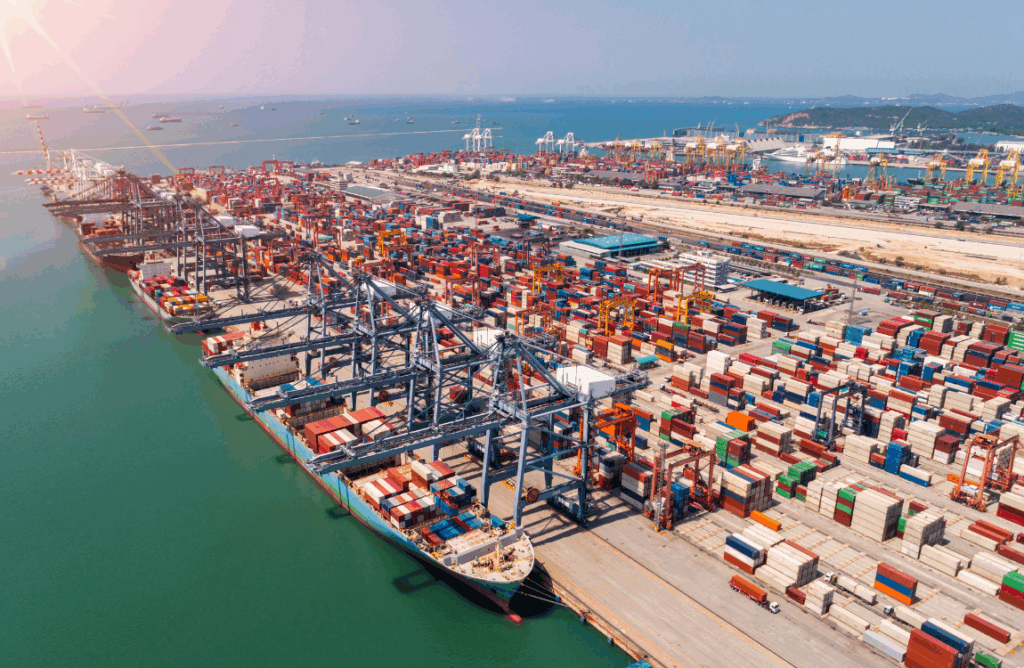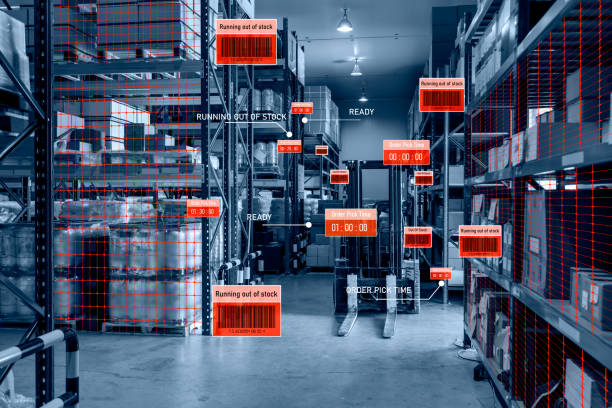Real-Time Visibility in Maritime Shipping: 5 Ways to Transform Port Operations
Maritime trade moves more than 80% of global goods, yet many port operations still rely on outdated systems, manual updates, and delayed communication. As ports handle increasing volumes and unpredictable disruptions, Real-Time Visibility in maritime shipping has become essential for improving efficiency and supporting smarter decisions.
This article explains how real-time visibility enhances port performance, reduces costs, and strengthens supply chain reliability. It also introduces five practical applications that are transforming port operations in 2025.

What Does Real-Time Visibility in Maritime Shipping Mean?
Real-time visibility refers to the continuous tracking and monitoring of vessels, cargo, and port activities through connected digital systems. It combines data from AIS (Automatic Identification System), satellites, IoT sensors, and terminal management platforms to create a live, unified view of the maritime supply chain.
In simple terms, Real-Time Visibility in Maritime Shipping refers to knowing exactly where ships and containers are, their current condition, and their estimated arrival or departure times.
Core Components of Real-Time Visibility
- Vessel Tracking: GPS and satellite data provide real-time vessel movements.
- Port Operations Monitoring: Sensors measure crane use, yard capacity, and gate activity.
- Cargo Condition Monitoring: IoT-enabled containers record temperature, vibration, and humidity.
- Predictive ETA (Estimated Time of Arrival): Algorithms adjust forecasts using congestion and weather data.
- Data Integration Platforms: Cloud systems unify information from shipping lines, ports, and customs.
When these elements connect, port managers gain an accurate, real-time view of operations, enabling faster and more precise decision-making.
Why Do Ports Need Real-Time Visibility?
Port logistics involve multiple stakeholders — ship operators, terminal managers, customs officials, truckers, and freight forwarders. Without a unified visibility platform, even minor delays can lead to significant bottlenecks throughout the supply chain.
Common issues solved by real-time visibility include:
- Delays between vessel arrival and berth assignment
- Idle cranes or workers due to poor scheduling
- Containers are misplaced or delayed during peak hours
- Inefficient communication between sea and land transport
- Lack of shipment transparency for customers
By implementing Real-Time Visibility in Maritime Shipping, ports shift from reactive management to proactive control. Real-time information replaces phone calls, emails, and manual updates.
1) How Does Real-Time Visibility Reduce Port Congestion?

Port congestion is one of the biggest challenges in maritime logistics. When ships arrive earlier or later than planned, berths become either overcrowded or underused. Real-time data helps balance and coordinate vessel movements.
Key benefits include:
- Dynamic Berth Scheduling: Ports can adjust assignments based on the actual positions of vessels.
- Predictive Arrival Planning: Digital simulations anticipate traffic flow to minimize overlap.
- Gate Coordination: Truck arrivals are synchronized with cargo readiness, reducing queues.
Ports using visibility tools report up to 25% shorter vessel turnaround times, which directly improves throughput and lowers demurrage costs.
2) How Can Real-Time Visibility Improve Cargo Handling Efficiency?
Efficient cargo handling depends on real-time awareness of container locations and movement. With Real-Time Visibility in maritime shipping, operators can make immediate adjustments to equipment and labor allocation.
Practical results include:
- Equipment is assigned dynamically to reduce idle time
- Yard space optimized based on upcoming departures
- Automated cranes or vehicles following real-time optimized routes
Terminals using these systems have achieved 10–15% faster container handling speeds while reducing energy consumption.
3) How Does Real-Time Visibility Enhance Predictive Maintenance?
Unexpected equipment breakdowns can lead to operational delays and increased costs. Sensors installed on cranes, vehicles, and port machinery constantly transmit data on vibration, temperature, and usage.

Advantages of predictive maintenance:
- Early detection of mechanical issues before failure
- Maintenance scheduled during low-traffic periods
- Fewer emergency repairs and reduced spare part costs
With predictive monitoring based on Real-Time Visibility in Maritime Shipping, ports can lower maintenance costs by up to 20% and reduce downtime by 30%.
4) How Does Real-Time Visibility Support Environmental Goals?
Ports face growing expectations to reduce carbon emissions and improve energy management. Real-time visibility in maritime shipping provides the data foundation needed to achieve these goals effectively.
Environmental benefits include:
- Optimized vessel speed and route planning to reduce fuel usage
- Less idle time at anchorage, cutting emissions
- Monitoring of energy efficiency across cranes and yard vehicles
By relying on live data, ports can balance sustainability targets with operational performance, achieving greener results without losing productivity.
5) How Does Real-Time Visibility Strengthen Supply Chain Collaboration?
Maritime logistics depends on coordination between sea, port, and inland transport. Real-time visibility creates a shared information environment where all stakeholders can access accurate and consistent data.
Collaborative advantages include:
- Shipping lines, terminals, and freight forwarders sharing live vessel and cargo updates
- Customs and inspection teams are preparing documentation ahead of time
- Shippers tracking cargo through unified digital dashboards
This level of transparency fosters trust, enhances workflow efficiency, and minimizes communication delays. Ports that adopt Real-Time Visibility in maritime shipping often experience faster document processing and fewer disputes.
What Technologies Enable Real-Time Visibility?
The success of visibility systems relies on data accuracy, connectivity, and integration. Common technologies include:
- AIS and Satellite Tracking: Provides constant global vessel position data.

- IoT Sensors: Tracks cargo conditions and equipment performance.
- Machine Learning Algorithms: Predict delays, ETA, and congestion.
- Cloud-Based Platforms: Consolidates data from carriers, ports, and customs.
- API Integrations: Connects visibility systems with WMS, TMS, and ERP software.
Together, these technologies create a comprehensive ecosystem for Real-Time Visibility in maritime shipping, supporting data-driven decision-making in every port operation.
What Are the Main Barriers to Adoption?
Despite the advantages, ports face several challenges when implementing visibility systems:
- Data Fragmentation: Different systems and stakeholders use incompatible formats.
- Cybersecurity Risks: Shared data platforms require strict security protocols.
- High Initial Costs: Upgrading infrastructure demands investment.
- Skill Gaps: Staff training is crucial for interpreting and acting on data insights.
Most successful ports begin with limited pilots, such as yard monitoring or vessel tracking, before expanding to a full-scale visibility platform.
How Can Ports Begin Implementing Real-Time Visibility?
- Assess Current Systems: Identify bottlenecks and manual data flows.
- Select Pilot Projects: Focus on quick wins, such as berth scheduling or container tracking.
- Integrate Existing Tools: Utilize APIs to connect current systems instead of replacing them entirely.
- Train Teams: Promote Data Literacy Among Port Operations Staff.
- Measure Impact: Track key performance metrics, including turnaround time and fuel savings, to effectively monitor progress.
Each step adds measurable value and builds confidence across stakeholders, creating a sustainable path toward digital transformation.
The Broader Impact on Global Trade

The rise of Real-Time Visibility in Maritime Shipping benefits not only ports but also shippers, carriers, and consumers. Improved visibility enhances reliability, reduces waste, and supports smoother coordination between global trade partners.
With real-time data, shipping companies can plan routes more accurately, ports can manage workloads efficiently, and customers receive shipments with fewer delays. The overall result is a faster, more transparent maritime supply chain.
Conclusion: The Data-Driven Future of Port Operations
Real-time visibility in maritime shipping is redefining how ports operate by connecting data from vessels, cargo, and equipment into a single, transparent system. With accurate and continuous information, decision-making becomes faster, risks are reduced, and efficiency improves.
Ports that invest in real-time visibility gain a measurable competitive edge through reduced congestion, lower emissions, and improved customer satisfaction. The technology is not a distant vision but a practical necessity for modern port management.
Discover how digital visibility solutions can enhance your maritime operations at Postalparcel.
Industry Insights
news via inbox
Nulla turp dis cursus. Integer liberos euismod pretium faucibua







